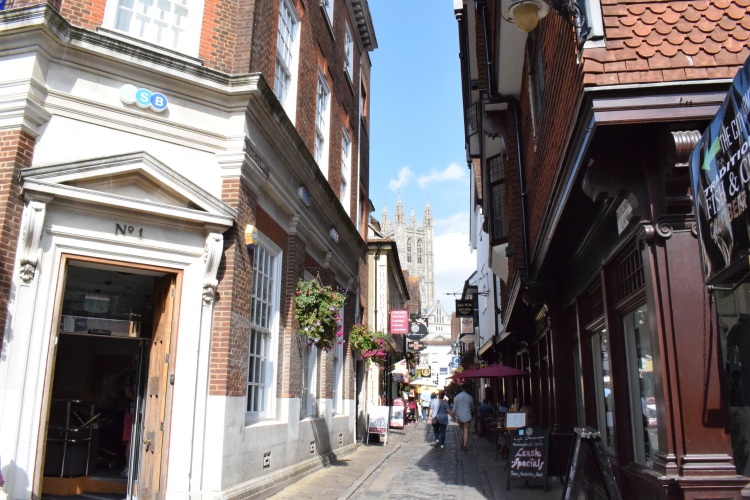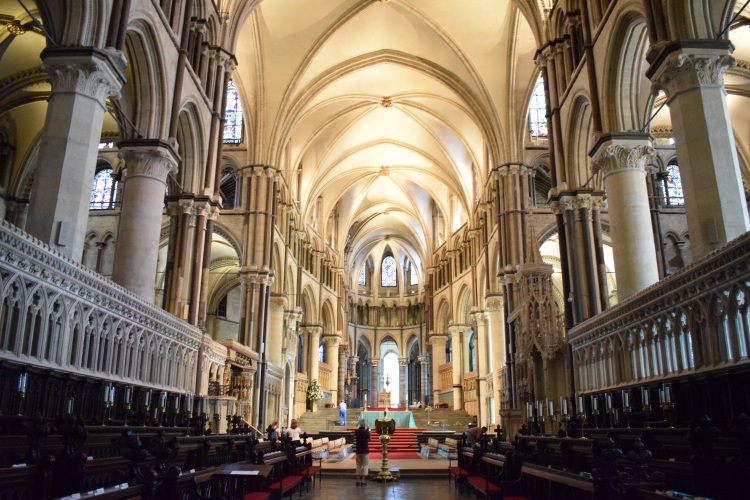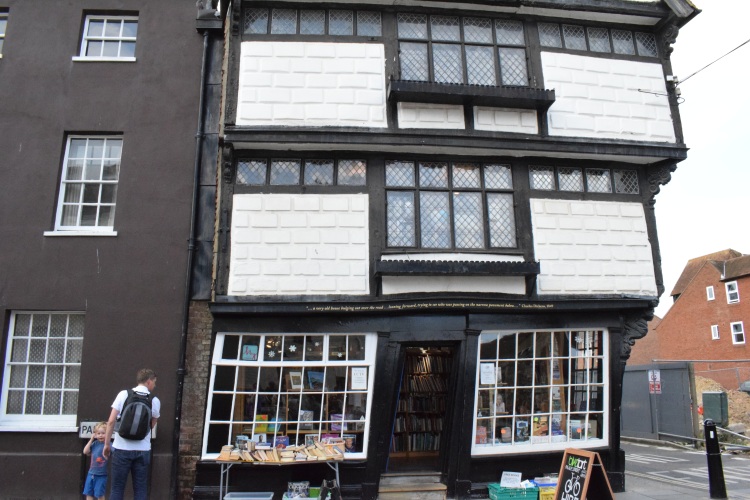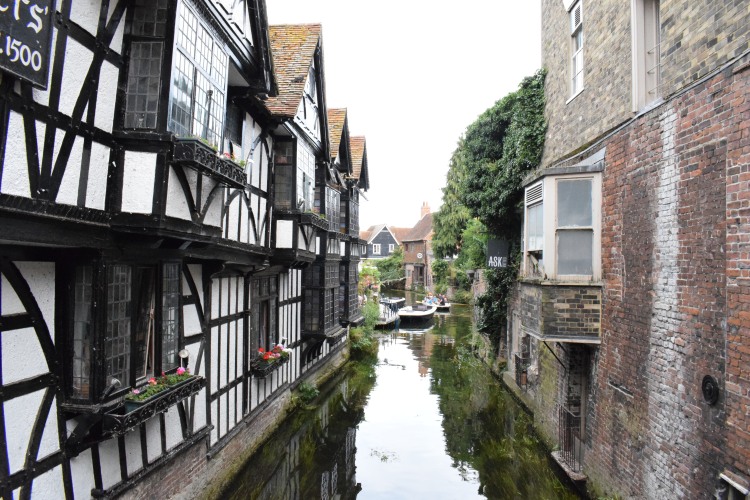On Friday, August 26, our professors took us on a field trip to Canterbury to simulate the adventure that the 29 travelers partook in Geoffrey Chaucer’s The Canterbury Tales. In context, the Canterbury Tales were about 29 travelers who met at a tavern in London and all decide to make a pilgrimage to the Canterbury Church to witness the body of the religious martyr and Archbishop of Canterbury, Thomas Becket. In The Canterbury Tales, the travelers tell stories to keep themselves occupied for their two-day trek.
When we reached the city of Canterbury, we were greeted by the great wall that the Romans had built around the city when they colonized England. There was a bridge connecting the train station to the top of the wall and we walked along the wall as we made our way to the entrance of the city of Canterbury.

Our professors gave us ten minutes to explore the city before we had our afternoon tea at the Moat Tea Room. We were fortunate to arrive at Canterbury on this day because the weather felt like the warm, Californian sun that we’re used to. We check out a lot of street markets on the street selling fruits, vegetables, jewelry and other novelty items.

We then had lunch at the Moat Tea Room which was a small and cramped, two-story building that pretty much serves classic English Tea and baked goods. I was surprised that we could fit about twenty people in that small corner to take a picture. The plates that they served us had slices of strawberry, raspberry, and chocolate cake on the top, scones( biscuits as us Americans call them) in the middle, and sandwiches consisting of cucumber and egg on the bottom. The tea had so much flavor to it and the scones were baked to perfection at the point where it was crunchy enough to melt in your mouth like butter.

After our time at the Moat Tea Room, we headed straight to the Canterbury Cathedral. This cathedral is the Vatican of Anglican churches and the Archbishop has status comparable to the Pope. Throughout the ages, many pilgrims have traveled across the world to see the body of Thomas Becket, the Archbishop of Canterbury of the 1160s. Becket became a martyr because he had a dispute with King Henry II over the rights of the church. Two of Henry’s men happened to hear this conversation and wanted to show their loyalty to the king, so one day, as Becket is kneeling on the floor praying, Henry’s men showed up and cut the top of Becket’s head off and killed him. People saw Becket as a martyr and began traveling to the Cathedral to see the shrine or his body. Around 1538, Henry VIII split away the Catholic Church because he wanted to divorce his first wife, Catherine of Aragon to marry another woman. Because he wanted to split against the church, he had to destroy the shrine and the bones of Thomas Becket.

Walking inside the cathedral was so surreal. There were so many shrines devoted to former archbishops and priests and this place also held a crypt for its bishops and had a section devoted to martyrs. I unfortunately couldn’t take any pictures in the crypt.


We then embarked on a tour around the city of Canterbury. Our tour guide was a sweet, old lady named Maureen and she gave one of the coolest tours I’ve been on. She told us that the city of Canterbury’s architecture had two different styles: An older style dating back to the time of the Romans, and a modern style that was built after WWII. The old style was built with flint. The picture below is an example of the modern style that was built because German forces dropped bombs in this area in 1942. The Nazis planned to bomb the Canterbury Cathedral because of its significance but missed and hit parts of the city instead.



“… a very old house bulging out over the road … leaning forward trying to see who was passing on the narrow pavement below …” reads the tiny text in yellow that hangs above the leaning door. Maureen noted to us that this house started leaning because the builders placed a fireplace on the top floor and that created an imbalance for the house and the top two floors to tilt. The bottom floor remains upright, but the door was made slanted to match the leaning floors.




Our trip to canterbury was amazing. It was amazing because, on the train ride there, we got to tell a bunch of stories to each other like the travelers did in The Canterbury Tales. Our professors told us to either tell a story about your most embarrassing moment or your favorite vacation spot. I decided to tell an embarrassing moment because it was more entertaining and my favorite vacation spot is yet to come. (I’m going to Berlin, Germany in September and Cinque Terre, Italy in October) I don’t think I can share my story here because it’s a tad bit inappropriate, but nonetheless, our stories made our trip much more memorable.

cute town!
LikeLiked by 1 person